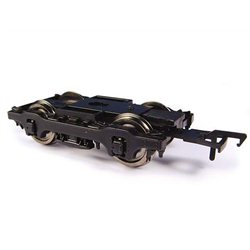There are tens of thousands of decals available covering a multitude of different models from trains, planes and...
No products
Product successfully added to your shopping cart
There are 0 items in your cart. There is 1 item in your cart.
Search Tips
What is a Thompson bogie?
Thompson bogies were the metal framework and suspension units that housed the wheelsets on Thompson railway coaches. They were hailed a great success due to their smooth running capabilities and were even retrofitted to earlier coaches and later saw continued use on some Mk1s.
In 1941 Edward Thompson became the Chief Mechanical Engineer for the LNER following the unexpected death of his predecessor Sir Nigel Gresley. In the five years that followed, Thompson set about upgrading many of Gresley's locomotive designs with mixed results, but he did have great success with a design for a brand new metal-bodied coach that provided substantially more protection for passengers than the wooden-bodied teaks that they were to replace.
The new coaches also featured a new design of bogie called the Thompson bogie famed for running incredibly smoothly. Subsequently, it was not only fitted to most Thompson coaches but also retrofitted to a significant number of older LNER stock. Some BR Mk1s also featured Thompson bogies on the heavier end of restaurant cars to support their extra weight.
Click here to receive the tips weekly in your mailbox. You can unsubscribe at any time.









